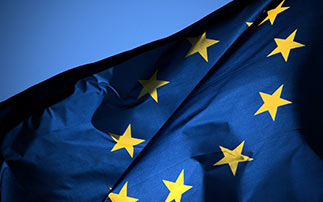In the era of digitisation and the rise of new technologies, the cultural and audiovisual sectors are being transformed. In France, but also throughout Europe, the media is adapting to new digital uses.

25 August 2021
+33(0)1 42 54 60 64 | contact@welcomeurope.com
In the era of digitisation and the rise of new technologies, the cultural and audiovisual sectors are being transformed. In France, but also throughout Europe, the media is adapting to new digital uses.
1. Which transformations?
Since the beginning of the 19th century, the audiovisual sector has undergone many changes. First, with the transition from controlled analog to unknown digital, but also with the video-on-demand services which revolutionised the audiovisual industry and changed society’s needs in the 2010’s.
With the digital explosion, it is time for mass consumption of audiovisual products. More than 21 new platforms were launched from 2011 to 2017 and in France, the frequency of paid VOD consumption is increasing: in 2013, only 8.1% of consumers were regular (at least once a week) compared to 16.2% in 2017. This figure doubles, while occasional users (less than once a month) decrease (72.9% in 2013 – 56.2% in 2017).
2. The need for new skills: the EU’s support
This evolution creates additional challenges: the protection of intellectual property, access to financing, adequate distribution of works and the learning of new technologies. The audiovisual professions use advanced technologies, sometimes less well mastered by professionals than by some amateurs. It is therefore necessary to train and upgrade professionals.
In order to ensure transnational cultural cooperation between European actors, the EU continues its efforts and in 2014, launches the Creative Europe programme. This programme brings together the former MEDIA, Culture and MEDIA MUNDUS programmes.
Under the Media strand, aimed at strengthening the distribution, accessibility and visibility of European audiovisual works on digital platforms, the Commission has launched, until 29 May, a call for proposals for the training of audiovisual professionals. With a budget of €7.5 million and 60% of co-financing, the objective of this call is to support training, with a view to acquiring skills and competences by beneficiaries, as well as to support the sharing of knowledge, networks and the use of digital technologies. The aim here is to facilitate learning and the acquisition of new skills, to share the knowledge of experienced professionals and also to strengthen international trade and cooperation in the audiovisual sector.
3. What about the new programming?
In December 2018, the EU Council confirmed its willingness to continue this programme, in order to face the full transformation of the sector, technological developments and global competition. In order to give this programme all the cards in hand to meet the challenges ahead, the Council is increasing the budget for Creative Europe to €1.85 billion, compared with the current €1.46 billion.
However, wouldn’t an increase of only 40 million euros be far from sufficient to cope with this incessant digital explosion? Don’t the culture and audiovisual sectors deserve a second programme more specific to their development? A major step in this direction would be a considerable support from the European Union for culture.

25 August 2021

